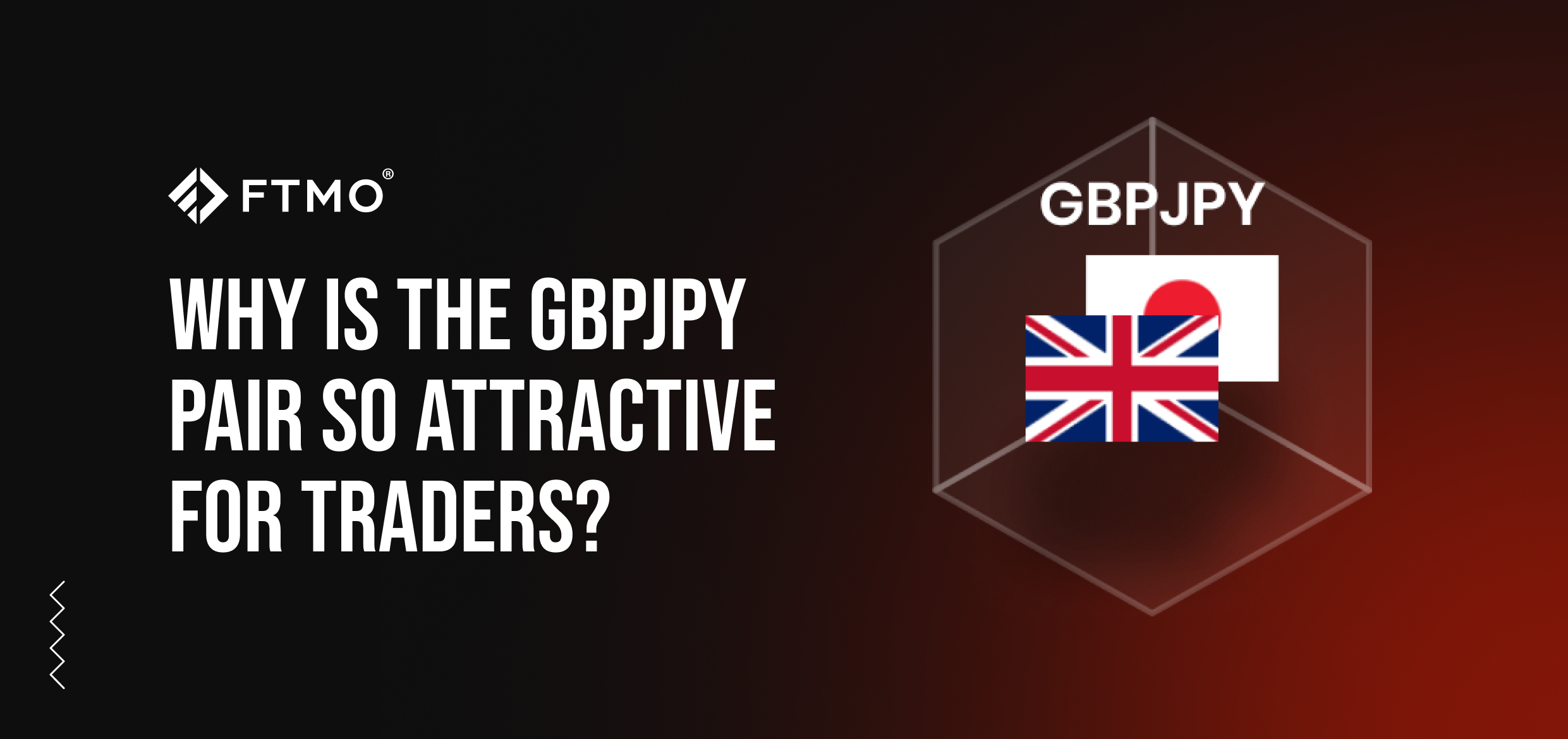
Why is the GBPJPY pair so attractive for traders?
Although the GBPJPY currency pair is not among the major currency pairs and is not among the most traded pairs in forex, it is very popular among retail traders. Why is this, and what is it about this pair that attracts traders? That's what you'll read about in today's article.
The currency pair GBPJPY is not one of the so-called majors pairs, it does not contain the US dollar, and we therefore classify it as a so-called cross pair. It includes the Japanese yen, which is the third most traded currency with almost 17% of all forex trades, and the British pound, which is the fourth most traded currency with almost 13%. This alone provides good liquidity for this pair.
GBP vs JPY
The British pound has historically, given the importance and size of the British Empire in the past, been very well positioned in the currency market. However, in the twentieth century, and especially after the Second World War, it has gradually lost its position, to the detriment of the US dollar. The British pound suffered its biggest fall in value during the financial crisis of 2008-2009, when it lost a third of its value against the US dollar. A further weakening of confidence in the British economy was marked by the end of the United Kingdom membership of the European Union in 2020 (Brexit). Despite the declining importance of the British pound, however, it is still one of the most traded currencies on the forex market, which is supported, for example, by the fact that London is one of the world's major financial centres.
The Japanese yen has long been considered a safe haven asset, an asset that serves as a hedge in times of financial crises and in an environment of rising market risk. In such times, the Japanese yen appreciates because it is a strong pro-export economy with a stable political system and Japanese investors and savers prefer to invest domestically.
The influence of the BoJ
Recently, however, the Bank of Japan, with its not-so-transparent monetary policy and large-volume purchases of government bonds and equity ETFs, has somewhat spoiled this status of the Japanese yen. By mid-2024, the JPY is thus the weakest against the USD in 38 years.
This opacity, incidentally, was also evident on July 11, 2024, when the Japanese yen strengthened significantly. This significant movement was first attributed to worse-than-expected inflation in the US, but it was eventually revealed that it was an intervention by the Bank of Japan, which did not officially admit it.

Europe vs Asia
The GBPJPY pair includes the currencies of two economies that are among the world's largest by nominal GDP (Japan in 4th place, the UK in 6th place). Their influence on the global economy is also supported by the fact that both countries are among the world's largest exporters (in 2023, the UK was ranked 4th, Japan 7th).
The Japanese economy is primarily focused on technology and innovation and invests heavily in research and development. Despite poor demographics and a rapidly ageing population, it is a leader in high-tech industries such as automotive, electronics and robotics. The UK, on the other hand, has a strong focus on the services sector, where it is one of the world's largest exporters, with a particular focus on finance, business services and insurance.
Overall, the GBPJPY pair is, like the USDJPY pair, a clash of two different cultures and economies. The UK and its currency are heavily influenced by events in Europe and political and economic events in the old continent, most recently high inflation, and central bank actions or a change in ruling party that has caused a minor political earthquake in the country. Traders should then also keep an eye on the country's GDP data, the aforementioned inflation, the labour market situation or the situation in the retail and service sectors. Japan and its currency are more sensitive to events in Asia, and in particular China's growing economic and political influence in the region. In terms of economic data, GDP and inflation data are also important, and the central bank mentioned above is a strong player in the currency market.
High volatility and liquidity
The different characteristics of the two major economies are the source of the higher volatility on this currency pair, which is a draw for forex traders. The large daily spread makes this currency pair particularly suitable for intraday traders and scalpers, who can also take advantage of the fact that this pair reacts more intensely to major macro data and news than most of the top traded currency pairs. At the same time, it may also be interesting for swing or position traders, who may not mind even slightly higher spreads than the majors pairs.
Given that these are two economies from different parts of the world, traders also benefit from the fact that liquidity on this pair is high both during the Asian session, when it trades mainly on the Tokyo Stock Exchange, and during the strongest period in the markets, when London influences market action.
Carry Trades
Central banks and the related monetary policy settings are a relatively significant factor in the Japanese yen pairs, influencing forex trading. Japan has long struggled, or has struggled, with very low inflation, which has resulted in very low interest rates over the long term. This has been further helped recently by the central bank, which has been fighting low inflation through quantitative easing. This was used by other major economies, but they have long since abandoned the zero interest rate policy.
Currency market traders are thus using the interest rate differential between the UK and Japan for carry trades, where they borrow the currency of a low interest rate country (JPY) and buy a high interest rate currency (GBP), in which they then invest in, for example, government bonds. In this way, they can profit from the interest rate differential and, if they hold the position longer, from positive swaps.
This way of capitalising on the interest rate differential can work in stable markets where buying a currency with higher rates helps to create strong trends, which can suit position and swing traders. The risk can be interest rate fluctuations in times of crisis, when investors in turn buy currencies considered safe havens that have lower interest rates.
About FTMO
FTMO has developed a two-step evaluation process to find trading talents. Upon successful completion, you may be eligible for an FTMO Rewards Account with a balance of up to $200,000 in simulated funds. How does it work?














